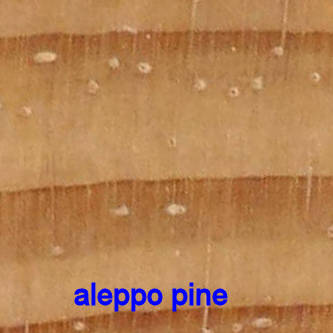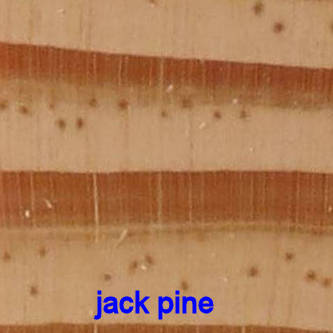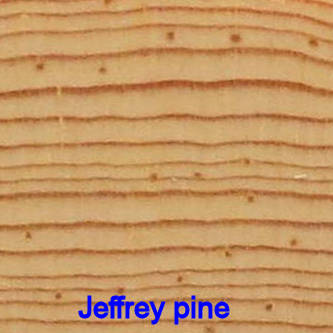open main page for all woods open page 2 for articles
RESIN CANALS
A resin canal is a characteristic of wood that occurs only in 4 genera in the Pinaceae family (the pine family). These are the pine (Pinus spp.), spruce (Picea spp.), and larch (Larix spp.) genera, and the single species Douglas-fir / Pseudotsuga menziesii. Resin canals consist of tubular canals (like little straws) lined with living parenchyma cells which exude resin (aka pitch) into the canals. The sizes of resin canals varies among species and this can sometimes be used for wood identification. They tend to be particularly large in the Pinus species and smaller in the others, as is obvious in the images below. The frequency and density of such canals varies widely even for different ares of a given piece of wood.
They can cause a gummy mess on freshly cut surfaces. Kiln drying can be used to "set" the resin and greatly reduce the amount of bleed out. Trauma to trees can also cause resin canals to form at the injury site. Some trees that have resin canals develop blobs of resin called pitch pockets at various places in the wood.
Examples:
NOTE: these particular images are NOT representative of all areas in each wood.
They were specifically chosen for having plenty of resin canals.
Nearby areas of the same sample might be entirely free of resin canals.
- - - LARCH - - -




- - - DOUGLAS FIR - - -

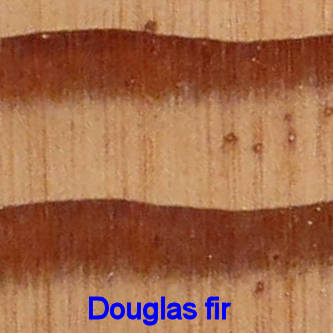
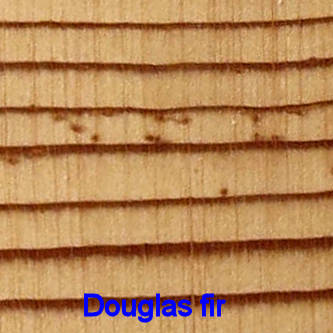
- - - SPRUCE - - -




- - - PINE - - -
NOTE how the density and size of the resin canals in pine is usually quite noticeably larger than in the other species above, but occasionally the size can be fairly small, so while large resin canals is a guarantee that a wood is pine, small resin canals is not a guarantee that it is not pine. Also, the size of the canals can vary within any particular Pinus species.
